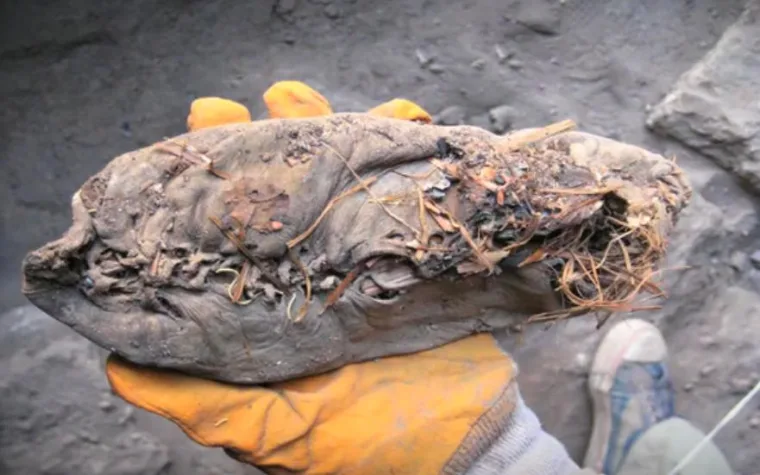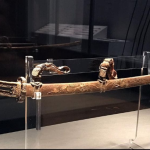Ancient Leather Footwear Found in an Armenian Cave: An Amazing 5,500-Year-Old Find

In the rugged terrain of Armenia, nestled amidst the rolling hills and rocky outcrops, lies a cave that holds within its depths a remarkable secret – a 5,500-year-old leather shoe, perfectly preserved and complete with laces. This extraordinary artifact, unearthed by archaeologists, offers a tantalizing glimpse into the lives of our ancient ancestors and challenges our understanding of early human history.
Dating back to the Chalcolithic period, this ancient shoe predates some of the world’s most iconic historical landmarks. Remarkably, it is 1,000 years older than the Great Pyramid of Giza and 400 years older than Stonehenge, standing as a testament to the ingenuity and craftsmanship of its makers.

The discovery of the leather shoe is a testament to the remarkable preservation conditions found within the cave. The cool, dry environment provided the ideal conditions for the leather to survive virtually intact for millennia, allowing archaeologists to study it in exquisite detail.
Upon closer examination, researchers were astounded by the level of craftsmanship evident in the shoe’s construction. Made from a single piece of leather, expertly stitched and shaped to fit the contours of the foot, it speaks to the skill and knowledge of its ancient makers. The presence of laces further highlights the attention to detail that went into its creation, suggesting that comfort and functionality were important considerations for its wearer.

But perhaps most intriguing is the story that the shoe tells about the people who once inhabited this cave. Who were they? What were their lives like? How did they survive in this harsh and unforgiving landscape? These are questions that archaeologists are still striving to answer.
One theory suggests that the cave served as a shelter for nomadic hunter-gatherers, providing refuge from the elements and a place to store their belongings. The discovery of the leather shoe supports this hypothesis, offering insight into the daily lives and activities of these ancient peoples.

Yet, the significance of the leather shoe extends beyond its archaeological value. It serves as a tangible link to our shared human heritage, connecting us to the distant past and reminding us of the resilience and adaptability of our species. In a world that is constantly changing, it is comforting to know that some things remain unchanged – our capacity for innovation, our curiosity about the world around us, and our ability to overcome adversity.
As we marvel at the intricacies of the 5,500-year-old leather shoe unearthed in the Armenian cave, let us also reflect on the lessons it teaches us about the fragility of human existence and the enduring legacy of our ancestors. May it serve as a reminder of the rich tapestry of human history and inspire future generations to continue exploring and uncovering the mysteries of our past.











